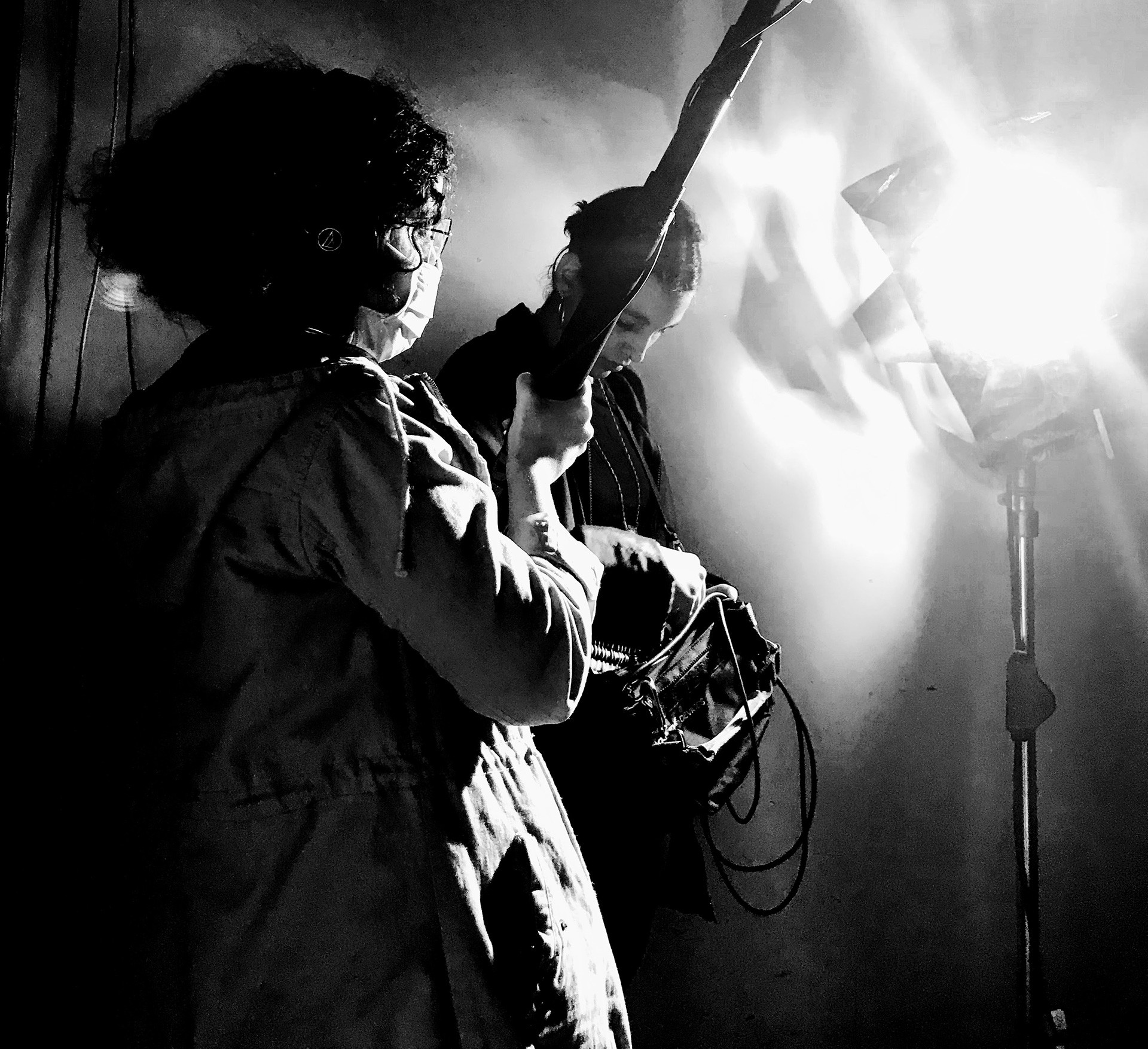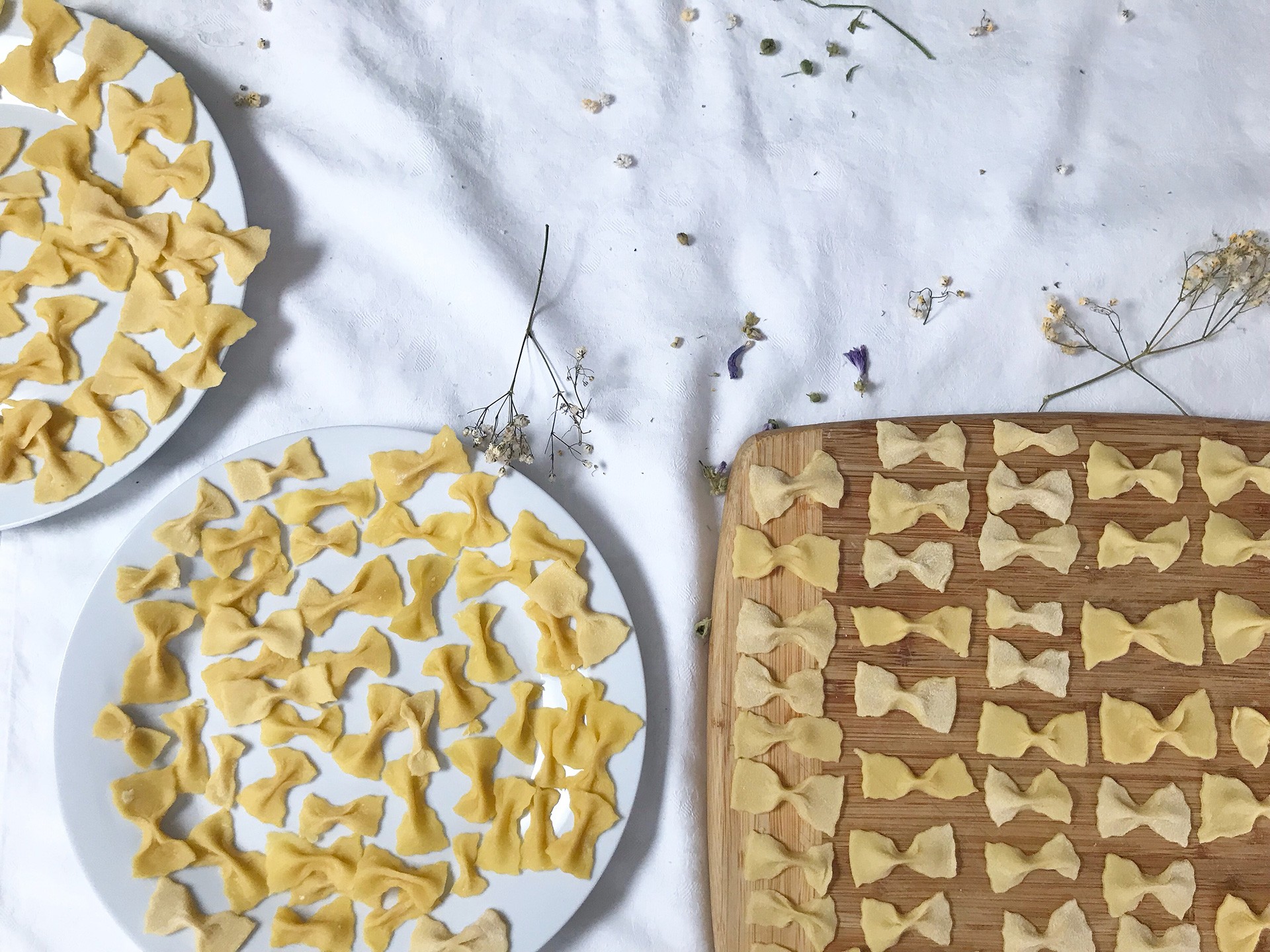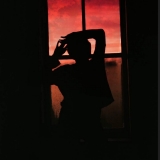
Cam team
1st AC giving the camera operator a break from having the RED camera on his shoulders while filming. This was a high-pressure set with many locations and various types of camerawork.
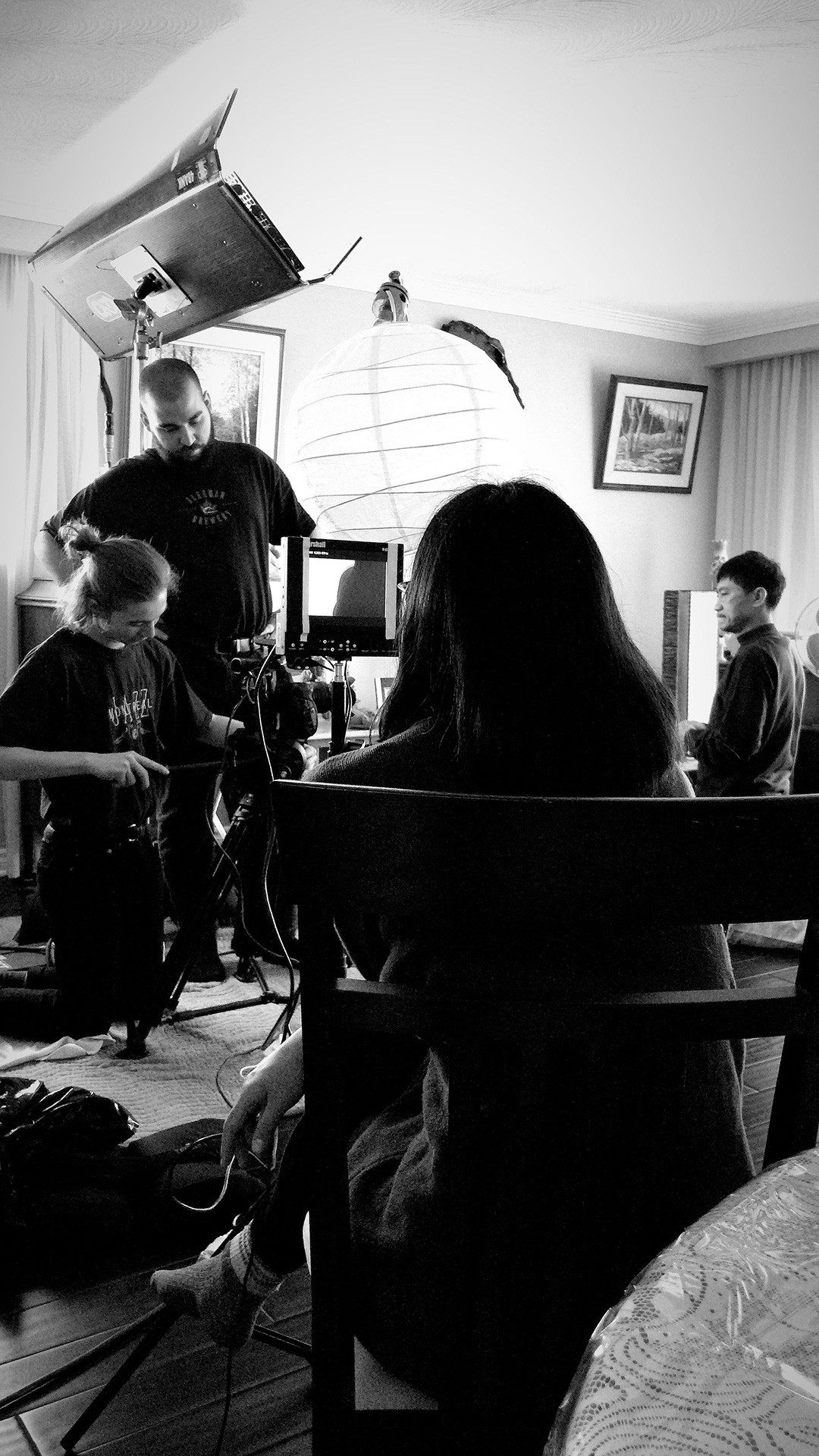
Tight spaces
I am so used to fiction film sets, where many people are working together. This one was a tiny crew of 5-6 people. A small crew is like a family. This was something I missed on other sets. I didn’t have any key role; I helped out as a Production Assistant. But I was learning how things work, what it takes to run a set efficiently, and how to work in a crowded space. It was a warm space, a healthy environment to work within. That’s definitely what I aspire to have for my own film.
Director knows what she wants
My friend is a very empowering female director. In my view, she is also a very good leader and a great artist. That’s why I look up to her. Through her most recent project, she brought people together who could relate to her film’s topic, and was confident in her approach. If she didn’t like something in frame, she would change it until it was to her liking.
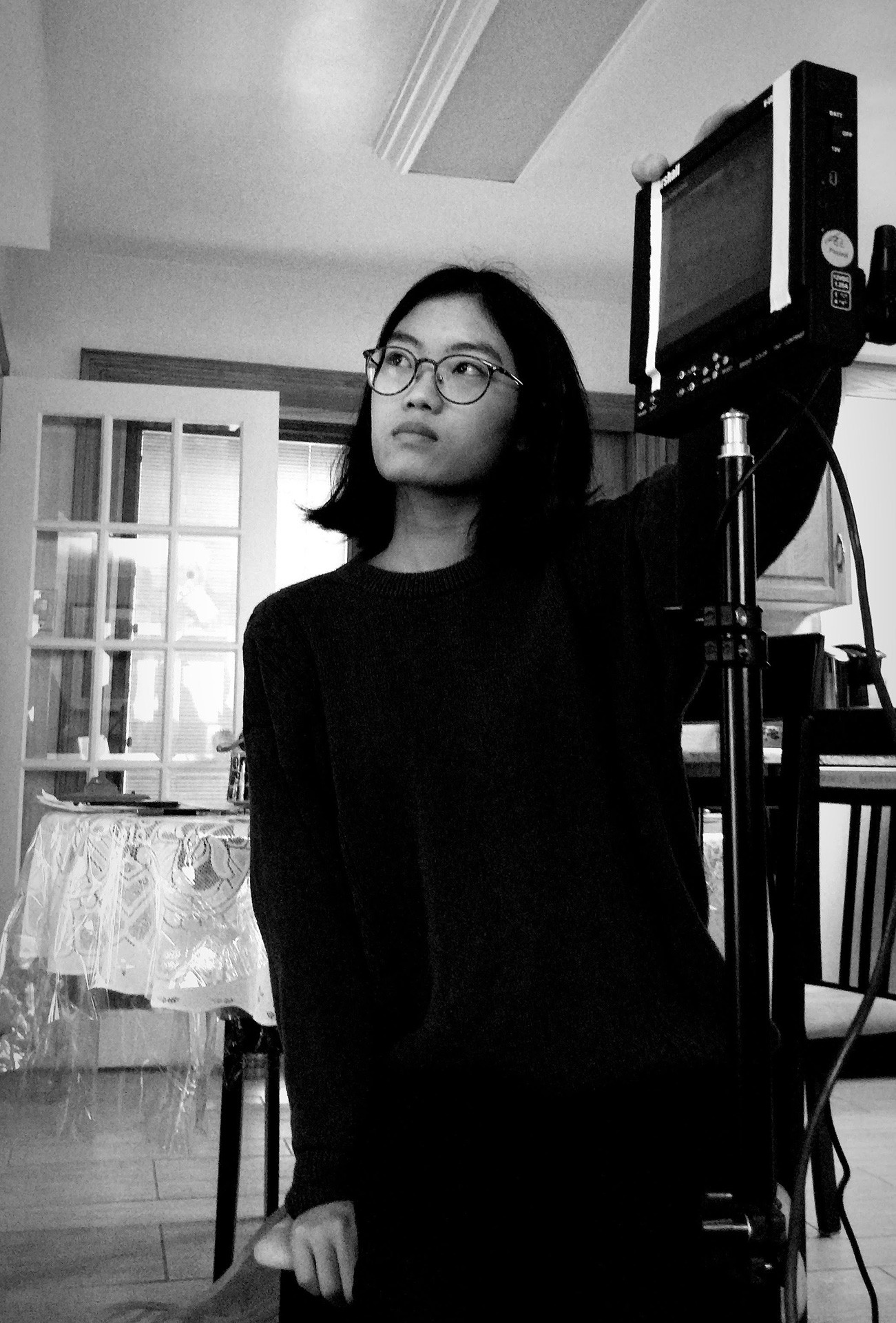
Classroom critique
One of the hardest parts of the filmmaking process is the in-class critique session. It’s hard to say what you want to say in such a critical situation. There is a fine line between constructive criticism and insults or negativity. Experiencing various forms of criticism firsthand has helped me to learn how to properly offer my opinions. In the beginning, I withheld giving critiques in class because I was too nervous to share how I felt. Yet there were also many times that my silence worked against me, since I wasn’t able to defend my vision. The critiques became a source of anxiety for me, and I took many peer criticisms personally; I’m still working on making this better.
Creating images as
first-time DOP
As a first-time DOP, I didn’t really understand how much of my personal vision was supposed to be in the film. However, I really tried my best. My relationship with the director was difficult at times as we were both under a ton of pressure in our new roles, but this only solidified in my mind how important the director-cinematographer relationship is. The entire shoot was extremely rushed. Often, I was asked to set up for a shot that had been forgotten. When I asked how much time we had, and the answer was “1-2 mins.” Even for a closeup, it’s almost impossible just to do the lighting for a closed set from scratch (no windows) in that amount of time. It upset me when I had no choice but to create rushed images, which I wasn’t happy with. But this experience taught me how to react in future.
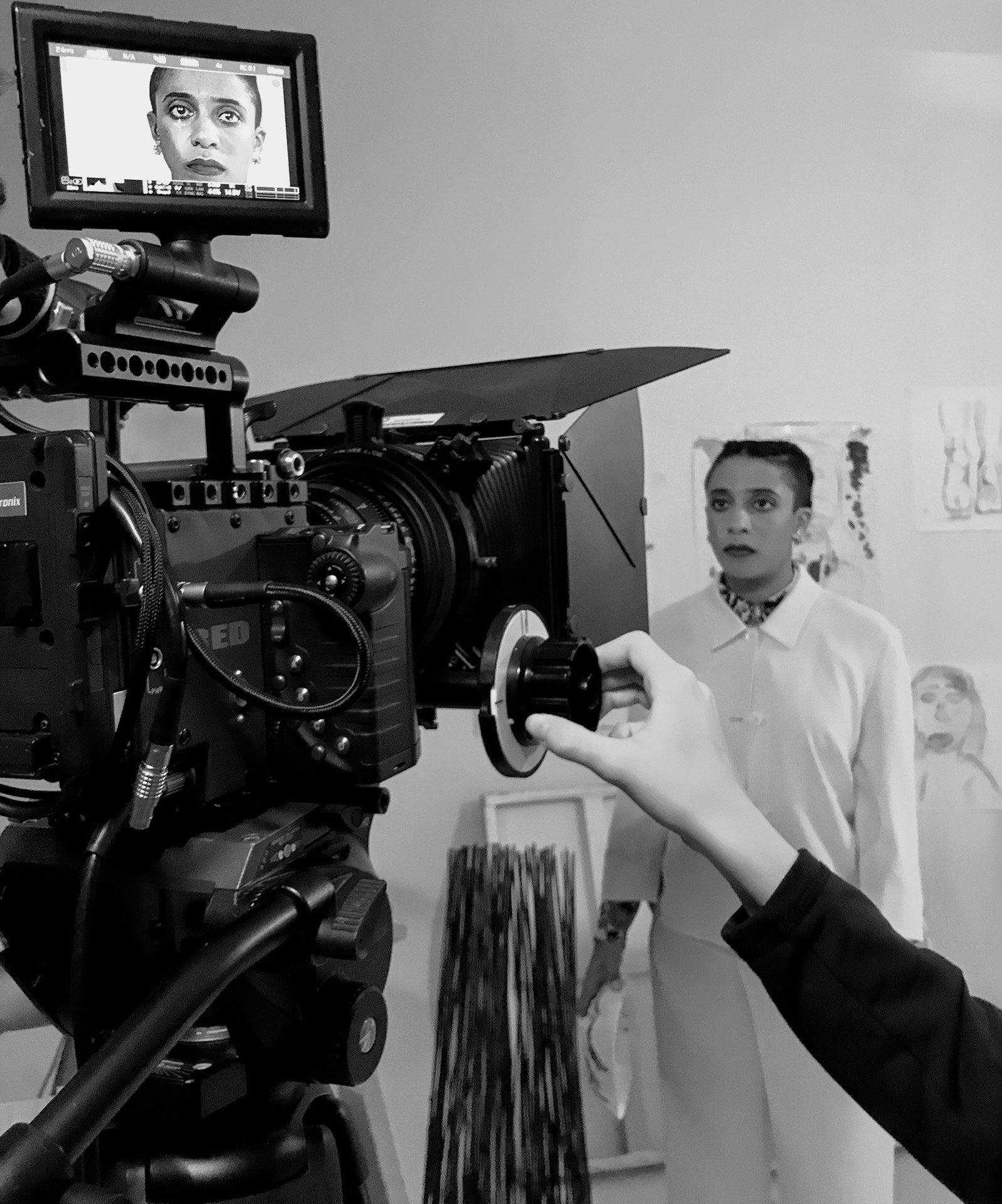
Recording
When I was lighting certain scenes, I realized I had to be careful not to walk into the same trap that many student filmmakers fall into: overusing blue and red lights. Some setups turned out better than others. Being behind the camera taught me how the camera can transform reality into something surreal. They [the images] looked so dramatically different. Just realizing that was a huge step for me.
First-time AD
I was working as a 1st AD on this set. The film camera only has one rectangular monitor that you see the image through. You don’t see the messiness of the set outside of that rectangle; all the crew, the lights, and even a fog machine. The set was quite chaotic at times. We were boiling water on [portable] stoves so that we could fill up the tub. Because we had the water boiling and all these lights on, the central breaker blew many times, causing the production to grind to a halt. When problems arose, I had to be the one checking in with the crew (and unfortunately rushing them so we could finish at a good hour), which put a lot of pressure on everyone. It got to a point where I wasn’t able to do it. I was exhausted and stressed and I had to ask my friend, “Could you make this announcement? I can’t do it.” I discovered it's really important to recognize your limits.
Female sound crew
This was a women’s team on sound. The girl on the left is in Film Studies program. At many points leading up to shooting, crew members had to drop out. When this happened, I had to quickly find another student to replace them in their positions. The girl on the left was one of the people who agreed to help out. This location was dusty, and I quickly became allergic to the dust. I could feel it in my ears and in the back of my throat, so I had a face mask on throughout the shoot. I made sure that the call sheets had information about the dust in case people had allergies. I also brought allergy meds and a pack of masks in case someone else needed them on set. In this photo, she was wearing a mask because she also has allergies.
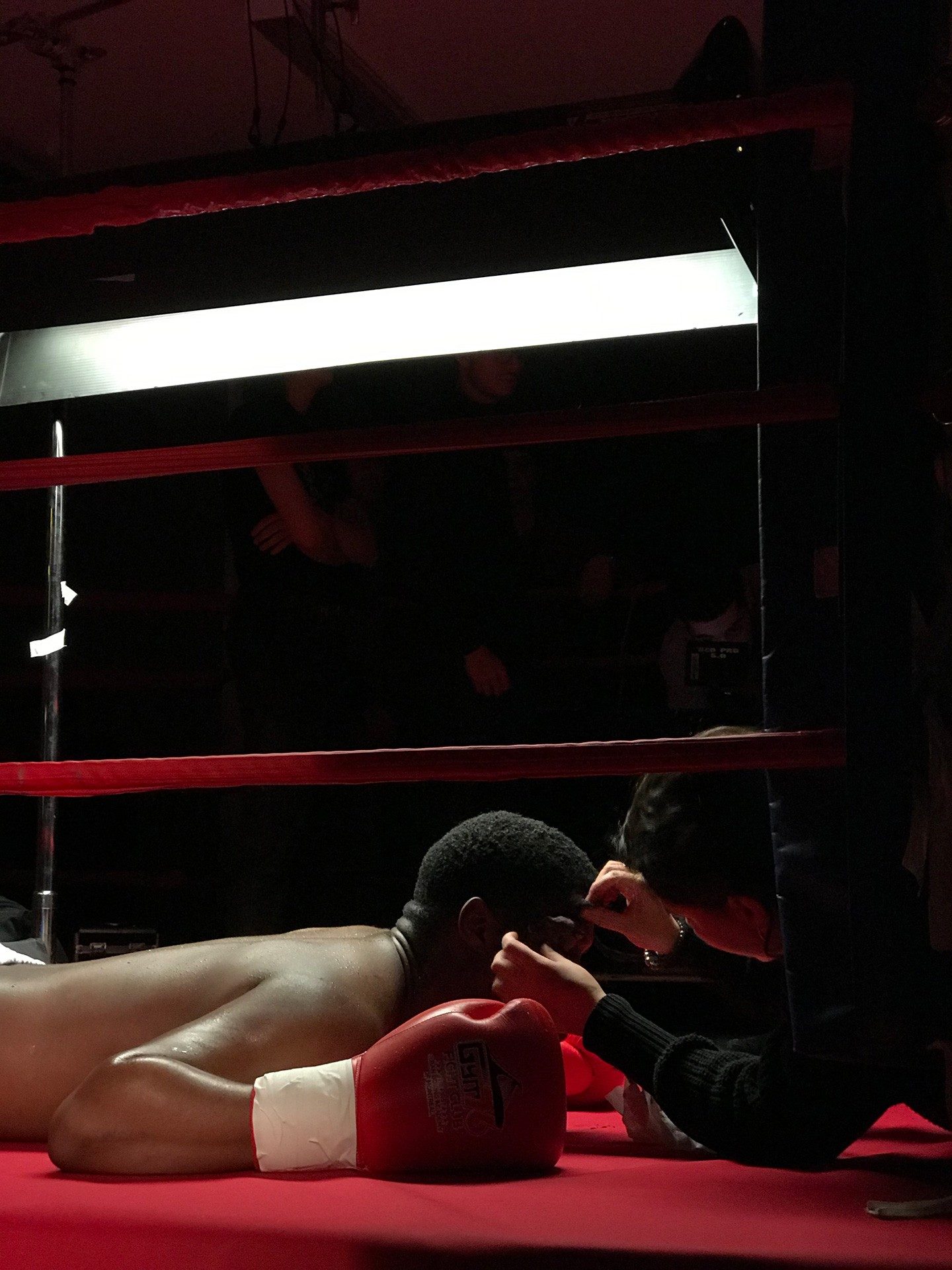
First time gaffing
I was a first-time gaffer and I found my role interesting. The main location was a hot and windowless room with flat lighting, so I thought of a way to help direct the light by taping garbage bags to the ceiling practicals. I felt strange because at one point, I was carrying heavy equipment and I heard from behind me: “Oh, it’s superwoman!” I thought, “Ok, that’s unnecessary.” You can lift up this light. I can lift up this light. I don’t have to be superwoman.
My crew setting up
We shot this film in [my actress’] home. She is ethnically Italian. When we asked her to change the plants, the drapes, the table cloth for art direction … she just said “that’s fine.” I was very lucky because it would be so difficult to replicate the small props, like picture frames, photos, and specifically Italian items in another studio to recreate the setups. One of the most important scenes was an interview, where she talks about her life, her sister’s passing, and how she experienced depression after she immigrated to Canada. It was great because when my crew heard that, many of them could relate to her stories. I think it was a healthy working space, which is what I wanted above all.
Independent Film: Farfalle
Farfalle means butterfly in Italian. [My lead actress] made them [the pasta] on set. This picture shows a bit of my vision. No contrasting colors. A lot of white, bright light, and dry flowers. The dry flowers represent an old person, and tradition. In the beginning I was scared, thinking there was no way to [make this film]. We had so many other school projects. Many people cautioned me, “don’t do it”. My professor also told me not to do it at the time. “Why am I still doing it?” I felt like I had to make [this film]. Now, it’s been completed. [The production] went better than I expected.


